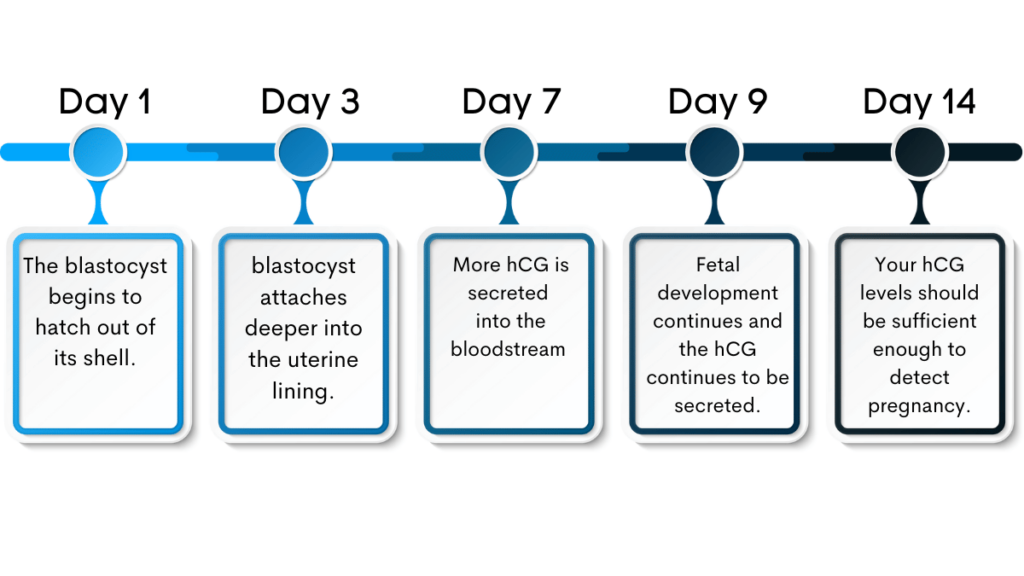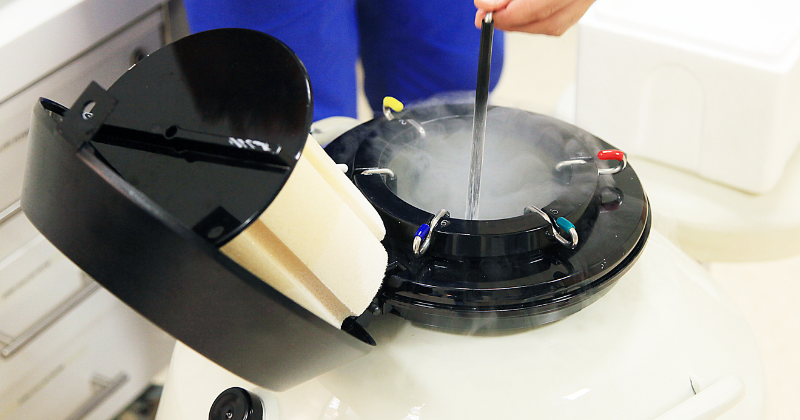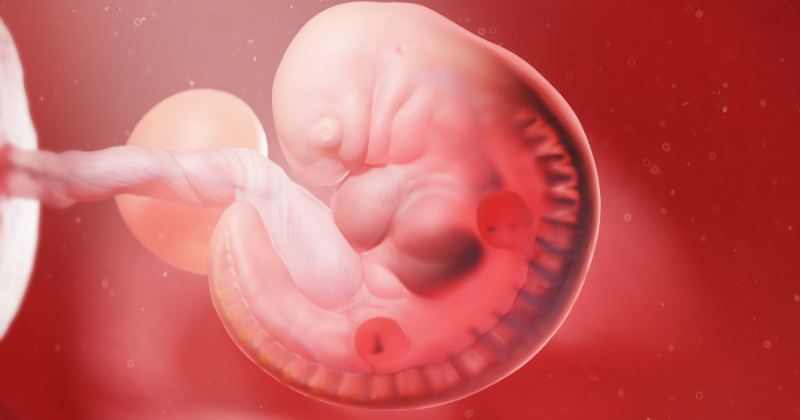The two-week wait after an embryo transfer can feel super long. It’s like the biggest waiting game ever! You’re excited and nervous all at the same time, hoping everything goes well. This wait can be confusing, with many questions swirling in your head. What’s happening inside?
Is it working? Should I be feeling anything?
Don’t worry—we’re here to help! This blog post will help you understand what happens after embryo transfer in 2025. Here are the latest facts.
The First Few Days After Embryo Transfer
Okay, you just had your embryo transfer. Now what?
The first few days are a mix of physical stuff and many emotions.
| Days Past Transfer (DPT) | Embryo Development |
| Day 1 | The blastocyst begins to hatch out of its shell. |
| Day 2 | The blastocyst continues to hatch and attaches to the uterus |
| Day 3 | Implantation begins as the blastocyst attaches deeper into the uterine lining. |
| Day 4 | Implantation continues. |
| Day 5 | Implantation is complete and the embryo begins to develop. |
| Day 6 | The hormone human chorionic gonadotropin (hCG) starts to enter the bloodstream. You may experience an increase in vaginal discharge or even a yeast infection caused by the medications that surrogates take. This is normal. |
| Day 7 | More hCG is secreted into the bloodstream. You may experience a little spotting which is typical and natural. In fact, it could be an indicator of pregnancy. Please do not fret! If you are unsure call your provider or the egg donor agency. |
| Day 8 | You may experience lower back pain similar to those you would experience during menstruation. This is totally normal and the cramping may even cause a little dizziness or pins and needles feelings. Again, do not fret. If you believe something is wrong, speak with someone to be sure. |
| Day 9 | Fetal development continues and the hCG continues to be secreted. |
| Day 10 | Fetal development continues and the hCG continues to be secreted. |
| Day 14 | Levels of hCG are now high enough to detect a pregnancy. Your hCG levels should be sufficient enough to detect pregnancy. You may even begin to feel symptoms of morning sickness. |
What to Expect Physically
- Mild Cramps: You might feel some mild cramps, like period cramps.
- Bloating: You might feel slightly bloated, like you overate.
- Spotting: You might have some light spotting.
It’s all normal! But here’s the thing: don’t try to guess if it means the embryo is implanting. Everyone is different, and these symptoms (or lack of them) don’t tell you much.
What to Expect Emotionally
Get ready for a rollercoaster! One minute, you’re super hopeful; the next, you’re worried. That’s okay. It’s a big deal! Here are a few things that might help:
- Find ways to relax, such as listening to music, doing yoga, or talking to a friend.
- Lean on your support system: Your partner, family, friends, or a support group can significantly help.
- Don’t obsess: Try not to overthink every little twinge. Focus on taking care of yourself.
Lifestyle Recommendations
- Rest when you need it: You don’t need to stay in bed 24/7 (that’s an old myth!). Gentle walks are fine. Just listen to your body.
- Eat healthy foods: Fruits, veggies, and whole grains are your friends.
- Take your medications: Remember to take your medications exactly as your doctor instructed. They’re super important!
Now, let’s dive deeper into how this whole implantation thing works.
Important Note: While this section focuses on the experience after embryo transfer, it’s important to remember that families are built in many ways.
Gestational surrogacy is a beautiful path to parenthood for those who can’t carry a pregnancy themselves.
In this process, an embryo created through vitro fertilization (IVF) with the intended parents’ egg and sperm is transferred to the surrogate mother‘s uterus. She carries the pregnancy and delivers the baby, but she has no genetic link to the child.
If you’re interested in learning more about gestational and traditional surrogacy, a surrogacy agency like a Florida surrogacy program can provide guidance. It will support throughout the entire gestational surrogacy process.
The Implantation Process
Okay, so you’ve had your embryo transfer.
Now, the tiny embryo is on a mission to snuggle into the lining of your uterus. This is called implantation. It’s like finding the perfect cozy spot to grow!
But implantation isn’t instant. It happens in stages, kind of like this:
- Opposition: Imagine the embryo gently approaching the lining of your uterus, like it’s saying hello.
- Adhesion: Now, the embryo starts to attach itself to the lining, a bit like Velcro.
- Invasion: The embryo burrows more deeply into the lining, making it home.
This whole process takes a few days. Think of it as the embryo getting comfy and settled in.
What Helps Implantation Go Smoothly?
A few things play a role in whether implantation happens or not:
- Embryo Quality: A healthy, strong embryo has a better chance of implanting.
- Endometrial Receptivity: The lining of your uterus needs to be ready to welcome the embryo.
- Your Health: Your age and overall health can also affect implantation.
- Lifestyle: Things like stress, what you eat, and whether you smoke can make a difference.
What if Implantation Doesn’t Happen?
It’s important to know that implantation doesn’t always work. Although this can be harsh, one must be prepared for it. If it doesn’t happen this time, it doesn’t mean you’re out of options. You can talk to your doctor about the steps, such as trying another embryo transfer or exploring other paths to parenthood.
Important Note: For those considering gestational surrogacy, the implantation process is similar.
The embryo, created through in vitro fertilization (IVF), is transferred to the uterus of the gestational surrogate. The same factors influence successful implantation.
If you have questions about the surrogacy process, like how many times you can be a surrogate mother, you can get helpful information from surrogacy FAQs. A surrogacy agency can also guide you through the entire surrogacy process, including medical procedures and medical expenses.
Early Pregnancy Symptoms
Okay, let’s talk about those early pregnancy symptoms. You know, the ones everyone talks about.
But first, a little reality check: those symptoms can be super sneaky!
Common Early Symptoms
Here are a few things you might notice:
- Sore Boobs: Your breasts might feel tender or swollen.
- Tiredness: You might feel more tired than usual.
- Feeling Sick: You might feel nauseous, especially in the morning.
- Peeing More: You might find yourself running to the bathroom more often.
But here’s the catch: these symptoms can also be caused by the progesterone medication you’re taking.
It can be tricky to tell the difference!
Phantom Symptoms
Sometimes, your mind can play tricks on you.
You might think you’re feeling symptoms, even if you’re not. It’s called phantom symptoms, and it happens because you’re so focused on every little thing. Try not to overanalyze every twinge and ache.
No Symptoms? No Problem!
Some women don’t have any symptoms at all in early pregnancy. And guess what?
That’s normal, too! Every pregnancy is different. Don’t freak out if you’re not feeling anything. It doesn’t mean something is wrong. The best way to know is to wait for your pregnancy test. We’ll discuss that later.
Important Note: In surrogate pregnancy, the gestational surrogacy process involves close monitoring by a fertility clinic.
The surrogate will experience the same early pregnancy symptoms (or lack thereof) as any other expectant mother. Throughout the journey, she must communicate openly with the intended parents and medical professionals. While the baby is not genetically related to the surrogate, she plays a vital role in providing a nurturing environment for the child to grow.
If you’re exploring surrogacy, researching surrogate locations and understanding the legal process involved is essential.
Navigating the Uncertainty
Okay, deep breaths. You’ve made it through the embryo transfer, and now comes the most challenging part: the two-week wait.
It’s normal to feel like you’re on an emotional rollercoaster during this time.
The Emotional Rollercoaster
You might feel excited one minute and anxious the next. You might find yourself analyzing every twinge and wondering if it means something. It’s tough, but try to be kind to yourself. This is a big deal, and your feelings are valid.
Here are a few things that might help:
- Distract yourself: Keep busy with things you enjoy, like reading, watching movies, or spending time with loved ones.
- Practice mindfulness: Focus on the present moment instead of worrying about the future. Try meditation or deep breathing exercises.
- Connect with others: Talk to your partner, friends, family, or a support group. Sharing your feelings can make a big difference.
Dos and Don’ts
While you’re waiting, here’s the lowdown on what to do (and not do):
- Do: Follow your doctor’s instructions about medications and activity levels.
- Do: Eat healthy foods and stay hydrated.
- Do: Find healthy stress management methods, like exercise or relaxation techniques.
- Don’t Google every symptom or compare your experience to others.
- Don’t: Overdo it with strenuous exercise or heavy lifting.
- Don’t Smoke or drink alcohol.
When to Take a Pregnancy Test
It’s tempting to take a pregnancy test early, but try to resist! Waiting until your doctor recommends it is essential for the most accurate result. Home pregnancy tests can be accurate, but a blood test at your doctor’s office is even more reliable.
Important Note: The two-week wait can be equally emotional for intended parents working with a gestational carrier.
Open communication and mutual support are crucial during this time. Remember, you’re in this together.
Pregnancy Test Results
The moment of truth has arrived! You’ve taken the pregnancy test and are now staring at the results.
Here’s what you need to know, whatever the outcome.
Positive Result: Congratulations!
If you see those two lines (or whatever signal your test uses), take a deep breath and celebrate! You’re pregnant! But what happens next?
- Schedule an appointment: Call your doctor to schedule an ultrasound and confirm the pregnancy.
- Keep taking your meds: Continue taking any medications as your doctor prescribes.
- Focus on prenatal care: Consider taking prenatal vitamins and finding a healthcare provider to guide you through your pregnancy.
This is an exciting time, but feeling a bit overwhelmed is normal. Don’t hesitate to ask your doctor any questions you have.
Antagonistic Result: Don’t Lose Hope
If the test results are negative, it’s okay to feel disappointed. Although it’s challenging, it’s important to remember that it’s not the end of the road.
Here are a few things to keep in mind:
- False negatives happen: Sometimes, tests aren’t accurate, mainly if you tested too early.
- Other options include talking to your doctor about the next steps, like trying another embryo transfer or exploring different paths to parenthood.
- You’re not alone: Reach out to your support system for emotional support.
Important Note: In gestational surrogacy, the intended parents eagerly await the pregnancy test results.
If the result is positive, it marks the beginning of a beautiful journey. If it’s negative, the surrogacy agency and fertility clinic will work closely with the intended parents and the gestational carrier to explore the next steps. Open communication and emotional support are crucial for everyone involved, depending on whether the situation involves another embryo transfer or congregation.
If further cycles are pursued, factors like surrogate locations and donor compensation may be reassessed.
Advancements in Embryo Transfer in 2025
The world of fertility treatment is constantly evolving.
New technologies and techniques are constantly being developed to help people achieve their dreams of parenthood.
Here are some of the exciting advancements happening in embryo transfer in 2025.
New Tech on the Scene
Scientists and doctors are always looking for ways to improve embryo transfer. Here are a couple of cool things they’re working on:
- Picking the Best Embryo: They use unique cameras and computer programs to examine embryos better and choose the healthiest ones for transfer.
- Timing is Everything. They’re determining the best time to transfer the embryo to increase its chances of implantation.
- AI is Here to Stay: Artificial intelligence analyzes tons of data and helps doctors make the best decisions for each patient.
Personalized Treatment
No two people are the same. Doctors are realizing that fertility treatment should be personalized, too. This means they’re using things like:
- Genetic Testing: This helps them understand if genetic issues could affect the embryo.
- Special Tests: They test how your body responds to different medications and treatments.
This helps them create a plan that’s just right for you.
What’s Next?
The future of embryo transfer looks bright! Scientists are working on even more amazing things, like:
- Making the Uterus More Welcoming: Researchers are finding ways to make the uterus’s lining even more receptive to the embryo.
- Less Invasive Procedures: They’re developing more straightforward techniques on the body.
It’s an exciting time, and these advancements are giving more and more people hope for a successful pregnancy.
Stay Present and Positive
It’s been quite a journey exploring the world after embryo transfer!
From those first few days of uncertainty to the emotional rollercoaster of the two-week wait, the time is filled with hope and anticipation. Remember that every step and feeling is part of this incredible process.
Technology is revolutionizing how we approach embryo transfers, offering new possibilities and personalized care.
No matter what your parenthood looks like, you’re not alone. Lean on your support network, trust your body, and embrace the journey.
Frequently Asked Questions
What can I expect after an embryo transfer?
After an embryo transfer, you might experience mild cramping, bloating, or spotting. It’s important to rest when needed, eat healthy foods, and follow your doctor’s instructions about medications. Emotionally, you might feel excitement, anxiety, and uncertainty.
How long does it take for the embryo to implant?
Implantation typically occurs within a few days of the embryo transfer, but it can take up to a week. Remember that it’s a gradual process, not an instant event.
What are the early signs of successful implantation?
While some women experience early pregnancy symptoms like breast tenderness, fatigue, or nausea, these can also be caused by medications. There’s no foolproof way to know if implantation has been successful until a pregnancy test.
How can I cope with the two-week wait after embryo transfer?
The two-week wait can be emotionally challenging. Focus on self-care, find healthy distractions, and lean on your support system. Mindfulness techniques like meditation or deep breathing can also help manage anxiety.
What happens if the pregnancy test is negative?
A negative pregnancy test can be disappointing, but it’s important to remember that it’s not the end of the road. Talk to your doctor about the next steps, which might include further testing, another embryo transfer, or exploring alternative paths to parenthood.
More information on embryo transfers can be found in our newly published blog, Understanding the Embryo Transfer in IVF.
Wendy Arker entered the field of infertility with a huge heart and passion to guild others on their quest to grow their own family after her personal journey with infertility and turning to egg donation and sperm donation to create her own family. Being a single-mother-by-choice, Wendy understands firsthand the unique way families are built. Whether you’re a married couple, single, or LBGTQ, Creative Love is committed to assisting you.










